








MIDWEEK UPDATE 8 JULY 2020   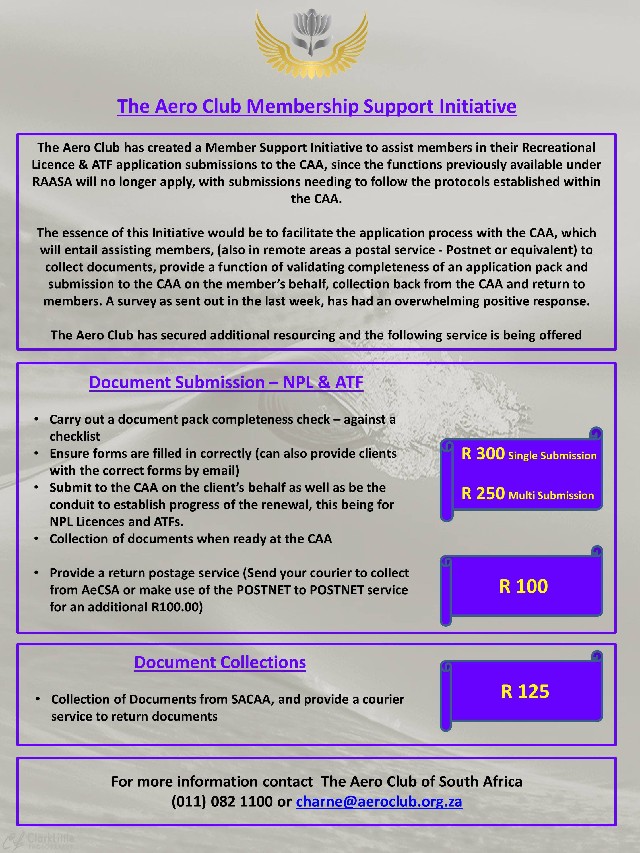    E-LEARNING DURING YOUR CAREER by Anthony Foxcroft CFI of Aviation Training, with 20 years' experience as an airline pilot and instructor I arrived at company HQ for my first day as a new recruit and after the welcoming session with the boss, we were ushered into a classroom to begin our type rating training. Each of us had a desk with a neatly stacked pile of books a foot high: FCOM, AFM, OM, QRH, Jepp plates, DG and CRM among a host of courses we would all need to complete. Job number 1 was to take the hefty update package and go through each of the books, manually updating pages. By contrast, my most recent conversion was an entirely paperless affair. Day 1 was spent handing out iPads, getting everyone up and running with company emails and logins and familiarising ourselves with where to find all the important documents. 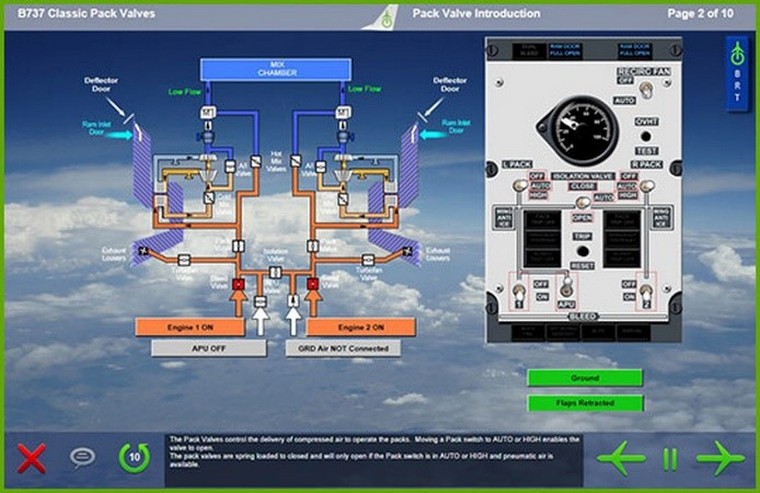 Recurrent training too, is all online. Complete all your courses on your own and the simulator instructor verifies you've passed before heading straight in to briefing for the day's exercises. The savings to operators is huge in manpower, time and materials. Courses are high quality, standardised and engaging. General aviation training can benefit from these same advantages from your first flight as a student pilot.  Studying from digital materials can be a little different to what you're used to; for example, you will need to become familiar with using the navigation panel, index and bookmarks in order to be able to find information easily. As the world becomes increasingly digital these are important skills to learn, and if your goal is to enter a career as professional pilot, you'll already be comfortable with these methods. Anthony Foxcroft is the CFI at Aviation Training.  COVID 19 REGULATIONS AND INITIATIVES AND AEROCLUB NEWS  AERO CLUB COMMUNIQUE JULY 2020 # 1 Status on GA / RA flight operations in Level 3 - Update With some significant activity between the CAA and the Aero Club, we were able to find a suitable mechanism to find a way to put in place a proficiency authorisation process, as per the requirements of the DoT in time prior to the start of the weekend, which had gone live at 5 PM on Friday 3rd July after the release of the Notam & General Notice - see links to these documents below. Details are available on the Aero Club & CAASA websites that will link to the process per RA discipline. In summary, one can fly as much you like within an approved 7-day window (with no limits on re-applications), and as long as the flights all take place from the same airfield (out landings with no disembarkation is allowed). This covers GA and all our RA disciplines. As an additional measure for those who wish, a safety pilot / mentor can accompany such flights. As I write this on early Sunday, there have been 725 flight applications made, 450 already in by midnight on Friday night, which show the eagerness of everybody to get airborne and for sure, the sound of aircraft could be heard and seen in many places. As we move to lower levels of lockdown, we will be looking at further opening up of GA/RA, although we see the C-19 cases increasing significantly in the bigger metro areas. We trust there won't be a reversal to higher lockdown levels. Be safe & comply with the basics of C-19 protocols. www.aeroclub.org.za Application for Glider Recency Flights Application for Hang & Para-gliding & Powered Para-gliding Recency flights Application for Ballooning Recency flights Application for Parachuting Recency Application for Para-drop Flights in Support of Parachuting Operations For Model Flying - visit the SAMAA website  GUIDANCE FOR - GENERAL AVIATION AND AVIATION RECREATION PROFICIENCY FLIGHTS SACAA Private Bag X 73 Halfway House 1685. Tel: (011) 545-1000 E-Mail: delangen@caa.co.za GENERAL NOTICE # GAD-2020/003 - 3 JULY 2020 Procedure in respect of requirements for approval as provided for in Section 3(5B) - GENERAL AVIATION - as contained in Government Gazette 43493 of 1 July 2020 Due to the Covid-19 lockdown effect on aviation operations and more specifically the effect on maintaining pilot proficiency, this notice applies to: (a) General Aviation. Part 1 Definition: “General Aviation Operation” means an aircraft operation other than a commercial air transport, air ambulance or aerial work operation; (b) Recreation Aviation. Part 1 Definition: “Aviation Recreation” means flying microlight, glider, balloon, gyroplane, hang-glider, paraglider, model aircraft, light sport aeroplane, touring motor glider, parachute or involvement in aviation events; 2. Further directions published - 1 July 2020 (Government Gazette 43493 of 1 July 2020) 2.1. General Aviation (a) All aerial work is permitted for the following will be permitted for the following purposes: • agricultural spraying, seeding and dusting; • cloud spraying, seeding and dusting; • culling; • construction; o aerial harvesting; • aerial patrol, observation and survey; • aerial advertisement, including banner towing and other towing of objects; • search and rescue; • parachuting; • aerial recording by photographic or electronic means; • fire spotting, control and fighting; and • spraying, seeding or dusting other than for agricultural purposes and clouds. b) Aerial Work operations contained in the paragraph a) above must be read in terms of the issuance of an Air Service License and an Aerial Operators Certificate for a service rendered i.e. Commercial Flight Operations. For further information, please contact the following e-mail address: FOD_Aerial_Work@caa.co.za c) General Aviation operations with a privately operated “own aircraft” as an integral part of an essential service business flight for the exclusive benefit of the owner of the aircraft and business in terms of Part 91 i.e. Non-Commercial Flight Operations. For further information, please contact the following e-mail address: laubscherp@caa.co.za 2.2. General Aviation is permitted for the following purposes: (a) Proficiency flights provided that the flight is authorised by the South African Civil Aviation Authority and remains within the general flying area, airfield or airport boundaries; (b) For purposes of paragraph (a) above and as it applies to General Aviation Aircraft i) The application process in paragraph 4. below applies; ii) All aircraft airworthiness requirements and Pilot licensing requirements must be valid and current at the time of the intended flight. iii) VFR by day flights only; iv) Arrival and Departure aerodrome remains the same for the flight; and v) Single pilot or essential crew only, no passengers permitted. 2.3 Recreational aviation is permitted for proficiency flights provided that the flight is authorised by the South Africa Civil Aviation Authority and remains within the general flying area, airfield or airport boundaries. In the case of model aircraft, the procedure as published by the SAMAA and as applicable to the registered clubs contained in ENR 5.5 will apply. (a) For purposes of paragraph 2.3 above and as it applies to Recreational Aviation Aircraft: i) The application process in paragraph 4. below applies; ii) All aircraft airworthiness requirements and pilot licensing requirements need to be up to date and current for approval of the above flights; iii) VFR by day flights only; iv) Arrival and Departure aerodrome or site remains the same for the flight; and; v) In the case of non-powered flights, the SOP will apply. vi) Single pilot only, no passengers permitted. 2.4. For the purpose of proficiency flights in 2.2. and 2.3. above a pilot may request that a nominated and current senior mentor pilot or instructor be permitted to accompany the applicant as a safety pilot in order to promote proficiency and safety during such flights. a) General or Recreational Aviation operations other than those listed in this General Notice or covered under the notices below are NOT permitted. b) In the case of parachuting and hang or paragliding, tandem operations are NOT permitted. 3. This General Notice applies in addition to the existing General Notice's below: a) General Notice # GAD-2020/001: Maintenance Related Flights- Aircraft Engine and System Health. Continued airworthiness flights (aircraft engine and system health) as recommended by aircraft and engine manufacturers may continue in accordance with the process in 3. below; or b) General Notice #GAD-2020/002: Guidance for Positioning Flights. Aircraft positioning flights may continue in accordance with the process in 3. below; or c) Flights covered by the Government Gazette Notice No. 43375 inclusive of Essential Service and Business flights which are conducted in terms of Part 91 and Part 94 of the Civil Aviation Regulations may continue and must comply with the procedure contained in NOTAM A2116/20A02 as it was effective 3 July 2020 and may be amended from time to time. 4. Process to be followed: i. Each owner/pilot requesting a flight to be undertaken under the applicability of this Notice will be required to complete a flight request form that is accessible on the websites of the Aero Club of South Africa www.aeroclub.org.za, and the Commercial Aviation Association www.caasa.co.za (This will include a Covid-19 compliance form). ii. Once the form has been completed, the requestor will be prompted to submit the relevant pilot and aircraft documentation and will be advised of further procedure iii. An internal SACAA Authorisation process will follow where after the automated system will notify the owner/pilot of the outcome and further process to follow. iv. Website application and login detail required for registration of the intended flight and related detail will be provided. v. The CAA will be provided with a daily register of all flights undertaken against approvals issued by the automated system. a) Adherence to general COVID - 19 regulations At all times, the measures outlined by the South African Government to reduce the risk of the spread of COVID-19, such as social distancing, personal hygiene and minimising travel remain applicable and pilots and operators undertaking flights on the basis permitted here must observe these. All operators must submit a Covid-19 compliance form as part of the flight request as defined in 1 a) above b) Compliance with the Civil Aviation Regulations 2011 The SACAA has the responsibility to monitor compliance in civil aviation activities carried out in South Africa. This extends to the monitoring and enforcement of compliance with the Regulations and Directions issued pursuant to the declaration of a National Disaster made on 15 March 2020 in terms of section 27 of the Disaster Management Act, 2002 (Act No. 57 of 2002), as applicable to the aviation industry. Non-compliance to the Civil Aviation Regulations, 2011 have the following consequences: i. 185.01.1(1) Any person who commits an offence, or contravenes these Regulations, may be subjected to administrative or criminal action in terms of this Part. ii. 185.01.2 A person commits an offence if that person- (a) hinders or obstructs an authorised officer, inspector or authorised person in the exercise of his or her powers or the performance of his or her duties; iii. (m) contravenes any provision of the [Civil Aviation] Act and these Regulations. Issued by the South African Civil Aviation Authority (SACAA) Neil De Lange 3 July 2020 Senior Manager General Aviation   SAMAA UPDATE ON THE OPENING OF CLUBS Dear Club Member, The South African Model Aircraft Association (SAMAA) Management Committee (SMC) circulates the following communication to all members. It is with great delight that we inform you that our application for the relaxation under level 3 lockdown restrictions was successful, allowing model flying. However as expected, this relaxation remains conditional and will not mean flying as usual; very strict controls and precautions will need to be rigorously followed. We welcome the decision and thank the Aero Club for their involvement in facilitating the process. We know that this is a huge leap in the right direction to get the modelling community airborne again. Members and Committees are reminded that South Africa is still bound by the legislated Level 3 restriction. Irrespective of our individual views on this matter, we are bound to implement these precautionary conditions if we wish to enjoy the relaxations granted. Be mindful that these precautions are there for your safety. We refer to communication that was released to all chairmen earlier this week outlining the regulations and various guidelines. Each club is required to submit their plan in line with the provided guidelines, with supporting documentation to SAMAA office for review and confirmation of compliance. Compliant clubs will be issued with a certificate allowing the club to resume flying, in line with their respective plans. Discipline from all members will be paramount to keep the clubs open; it is everyone's responsibility to ensure we maintain compliance. Please refer to SAMAA's website for updates on clubs that have been declared compliant. The list will also be distributed on Facebook for ease of reference. You are reminded that without the compliance certificate no Flying is permitted. Failing to conform may result in relaxation being withdrawn. Clubs flying without the relevant certification are also cautioned of the risks of further action. We thank all the members for their patience throughout this cumbersome process, there still remains a long road ahead before any means of normality will return. In the interim we rely on your support and discipline. Have a great weekend SAMAA Management Committee   CORONA VIRUS AND AVIATION EVENTS Due to Covid 19 and regulations regulating travelling as well as restrictions controlling the number of people congregating together no aviation events will take place in the foreseeable future. Pilot's Post will advise our readers as soon as this change. EAA Flying Legend Talk Show with Karl Jensen Eventually, we will be able to enjoy an interview of Karl Jensen hosted by Scully Levin. We have been waiting for this talk show long before the March 2020 date that was set for the event before lockdown. Even with the current restrictions, we have joined the revolution and for the time being, will be hosting talk shows virtually, until such a time that we are able to gather at the Auditorium in person. Diarise now and we will keep you informed and circulate the meeting details to all members at a later stage. EAA of SA Auditorium Team rsvp@eaa.org.za 0832597691   VIKING AIRCRAFT CELEBRATES 50TH ANNIVERSARY 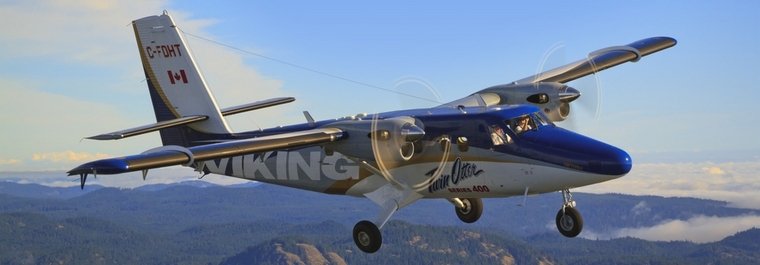 Incorporated in 1970, Viking Air Limited began as the successor to McKinnon Enterprises, a parts and modification facility working on the Grumman family of aircraft. After specializing in flying boats for over a decade, Viking switched focus in 1983 when De Havilland Inc. selected Viking as their exclusive spare parts manufacturer and distributor for the De Havilland DHC-2 Mk I Beaver, Mk III Turbo Beaver, and DHC-3 Single Otter aircraft. Photo © Viking The shift to De Havilland aircraft allowed Viking to develop the repair and modification business, which helped to increase Viking's experience and knowledge of De Havilland products. This insight further enhanced the skills of Viking's work force and transferred integral product knowledge throughout the company to augment Viking's existing capabilities. While developing into a specialized De Havilland support organization, Viking also maximized its manufacturing facility to diversify product offerings and undertake contract parts manufacture for Boeing, Bell Helicopter Textron, Lockheed Martin and Bombardier Aerospace. The contract with De Havilland Inc. (a Bombardier subsidiary) began as a spare parts manufacturer for the Beaver and Otter aircraft and quickly grew in strength until Viking became a key supplier of structural sheet metal parts and assemblies for the DHC-6 Twin Otter as well. The continued efforts and growing strength of Viking's support for the Twin Otter led to the announcement in 2005 that Bombardier was transferring the Customer Service Centre (“CSC”) for the type to Viking, allowing Viking to work directly with Twin Otter operators for supply of new parts and technical support. This continued and specialized support for the De Havilland legacy aircraft culminated in 2006, when Viking acquired the Original Type Certificates (manufacturing rights) for all of the out of production De Havilland aircraft, including: DHC-1 Chipmunk, DHC-2 Beaver, DHC-2T Turbo Beaver, DHC-3 Otter, DHC-4 Caribou, DHC-5, Buffalo, DHC-6 Twin Otter and DHC-7 Dash 7. As the Type Certificate holder, Viking became the Original Equipment Manufacturer (“OEM”) for these aircraft, naming Viking as the ultimate responsibility from a regulatory perspective for all aspects of the aircraft, from parts support through to design, engineering and technical information. In April 2007, Viking launched the Twin Otter Series 400 production program, taking off from where the original De Havilland Series 300 Twin Otter program ended in 1988. Viking took the original design and engineering data for the aircraft and incorporated over 800 changes to modify and modernize the existing airframe, with a special emphasis on safety and improving performance capabilities where possible. In 2010, the Series 400 Twin Otter production program received regulatory certification from Transport Canada and to date, Viking-built Series 400 Twin Otter aircraft have been delivered and are currently in operation in 30 countries worldwide. The success of the Series 400 production program led to Viking receiving the award for Exporter of the Year along with the Premier's Award for Job Creation at the 2012 BC Export Awards hosted by the Canadian Manufacturer and Exporters Association. Building on the organizational strength achieved from the Twin Otter Series 400 program, Viking acquired the Type Certificates for the Canadair Aerial Firefighter fleet in 2016, including the CL-215, CL-215T, CL-415, and CL-415MP multi-purpose amphibious aircraft. With this transfer, Viking assumed regulatory responsibility for all product support for the global fleet of 170 aerial firefighters.  MOROCCO ORDERS 24 BOEING AH-64E APACHE HELICOPTERS  Morocco is the 17th country to acquire the Boeing AH-64 Apache through a contract for 24 of the helicopters that was recently signed. Boeing has delivered nearly 2,500 Apache helicopters to 16 nations to date, including the U.S., Netherlands, Greece, United Kingdom, Japan, India, Singapore, South Korea and Saudi Arabia. Deliveries to Morocco are expected to begin in 2024. Photo © Boeing. “This is another step forward in our long partnership with the Kingdom of Morocco,” said Jeff Shockey, vice president, Global Sales and Marketing, Boeing Defence, Space & Security and Government Services. “Worldwide demand for the Apache is growing and we are proud to provide this best-in-class capability to Morocco.” The AH-64E Apache is the latest configuration of the attack helicopter. It is designed and equipped with an open systems architecture including the latest communications, navigation, sensor and weapon systems. It has an improved Modernized Target Acquisition Designation System that provides day, night and all-weather target information, as well as night vision navigation capability. In addition to classifying ground and air targets, the Fire Control Radar has been updated to operate in a maritime environment. Boeing will build and deliver the new Moroccan Apaches under a contract with the U.S. Army through the U.S. government's Foreign Military Sales process. Boeing's partnership with Morocco spans decades. The company is committed to developing Morocco's supply chain and future workforce. Boeing is a partner of the MATIS Aerospace joint venture, which produces airplane wire bundles and harnesses. In 2016, the company signed a Memorandum of Understanding with the Kingdom to create an ecosystem of aircraft equipment suppliers. Boeing also supports the country's future workforce through partnerships with Education for Employment (EFE) Morocco and the INJAZ Al-Maghrib association.  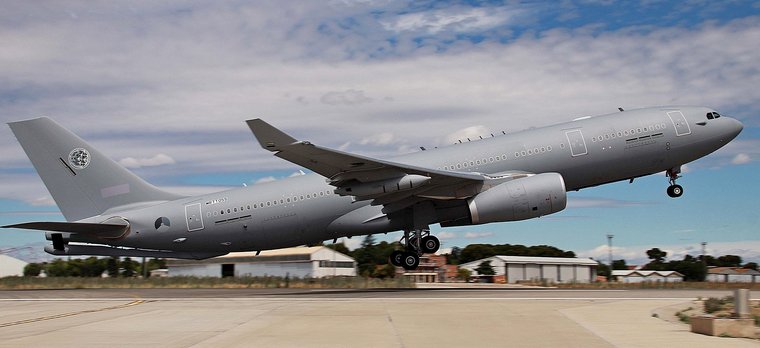 Airbus has formally delivered the first of eight Airbus A330 Multi Role Tanker Transport (MRTT) aircraft ordered by the NATO Multinational MRTT Fleet (MMF) after a ceremony held at the Airbus Getafe site in Spain. The official acceptance of this first aircraft marks a decisive milestone towards the entry into service of this multinational unit formed by the Netherlands, Luxembourg, Norway, Germany, Belgium and the Czech Republic. Photo © Airbus. The MMF programme is funded by the six nations which will have the exclusive right to operate the NATO-owned aircraft in a pooling arrangement. The aircraft will be configured for in-flight refuelling, the transport of passengers and cargo and medical evacuation operations. The European Defence Agency (EDA) initiated the MMF programme in 2012. OCCAR manages the MMF acquisition phase and the first two years of the Initial In-Service-Support as Contract Executing Agent on behalf of NSPA. Following the acquisition phase, NSPA will be responsible for the complete life-cycle management of the fleet. The A330 MRTT combines the advanced technology of a new generation tanker with the operational experience recorded during more than 200,000 flight hours in service. The A330 MRTT is interoperable with receivers worldwide and delivers true multi-role capabilities as proven during the recent MEDEVAC and strategic transport missions related to the COVID-19 pandemic. The above image shows the first A330 MRTT taking off during an industrial flight performed at Getafe, Spain.  BOEING DELIVERS 2,500TH AH-64 APACHE HELICOPTER 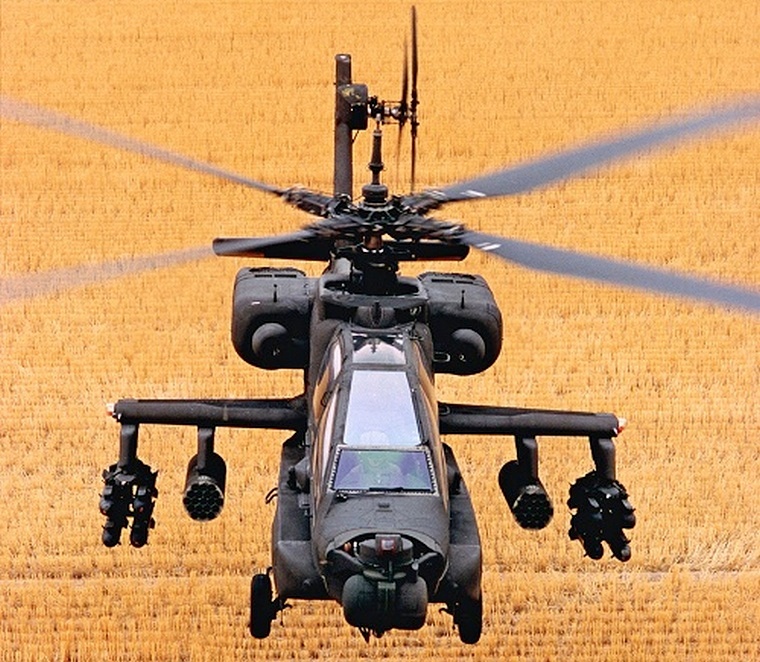 Boeing [NYSE: BA] recently delivered its 2,500th AH-64 Apache helicopter, an E-model Apache for the U.S. Army, from the company's production line in Mesa, Arizona. The first production AH-64, an A-model Apache, rolled off the assembly line on September 30, 1983, and was delivered by Boeing heritage company McDonnell Douglas to the U.S. Army in January 1984. Today, Boeing is producing and delivering AH-64E helicopters to a growing list of customers around the world. Photo © Boeing. Selected by, or in service today with the U.S. Army and the defence forces of 15 nations, Apache helicopters are slated to fulfil the requirements of aviators and battlefield commanders for decades to come. Planned modernization has ensured that Apaches have evolved with revolutionary technologies. Today's helicopters feature capabilities for resiliency in multi-mission operational environments. “As a former Army aviator with military service dating back to October 1978 and later selected to fly the first AH-64A and later the AH-64D model Apaches, it's a thrill today to be a part of the crews who complete flight testing on aircraft during development and prior to delivery to customers,” said Dave Guthrie, Boeing's chief pilot for Apache programs. “I know that I'm part of this helicopter's history and its future.” Legacy Apache deliveries, including new-build and remanufactured helicopters, include 937 A-models through 1997, more than 1,000 AH-64Ds between 1997 and 2013 and more than 500 E-models since 2011.  EUROFIGHTER TYPHOONS TRAIN WITH NATO WARSHIPS IN THE BALTIC OPERATIONS 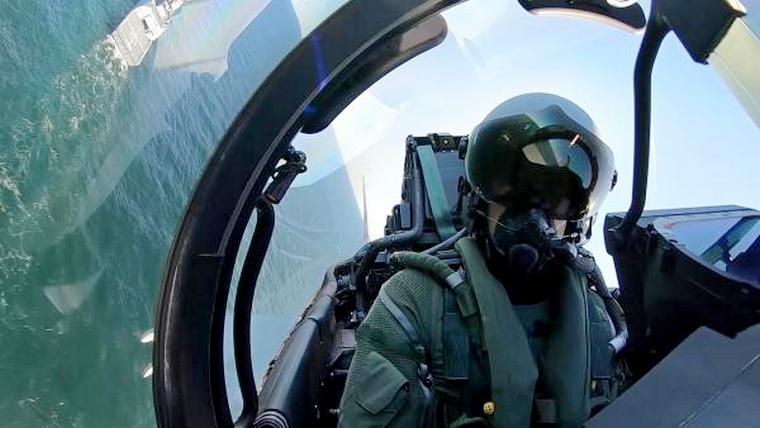 Eurofighter Typhoons from the UK Royal Air Force deployed in Lithuania have carried out mock air attacks to test the defences of NATO warships operating in the Baltic Sea. The RAF Typhoons from 6 Sqn are currently based at Šiauliai Air Base in Lithuania, with 135 Expeditionary Air Wing, to primarily conduct the NATO Air Policing mission. In addition to this mission however, the RAF are also conducting training activities and exercises with other NATO Allies and regional partners. Photo Eurofighter. The Air Maritime training exercise saw the Eurofighters being used to test the air defences of the Standing NATO Maritime Group 1 Task Force, commanded by Commodore Yngve Skoglund of the Royal Norwegian Navy in his flagship HNoMS Otto Sverdrup. The NATO ships were subjected to simulated air attack from high-performance fighter aircraft and air-launched anti-ship missiles. One of the RAF Eurofighter Typhoon Pilots said: “We are able to provide a realistic simulation of some of the most dynamic threats that NATO warships can face. This valuable training allows them to test every layer of their defences, whether it's their advanced surface-to-air weaponry or the more traditional upper deck gun crews and that's extremely rewarding.” The RAF Eurofighter Typhoons had an unusual advantage as the pilot leading the planning for the exercise is a Royal Navy Officer on exchange with the RAF. Having trained as a Warfare Officer before becoming a fast-jet pilot, his previous experience means he understands the challenges of both the air and maritime elements of the exercise. He said: “Flying at low-level over the sea is a complex and dangerous environment. If you lose concentration, even for a moment, the results can be catastrophic, let alone when you're performing aggressive and dynamic manoeuvres.” He added: “Having experienced this from the other side I can appreciate the workload the ship's company were under. Watching them manoeuvre on the attack runs was an incredible sight and certainly isn't something you get to see every day.” 135 EAW will be supporting wider NATO training activities alongside their Baltic Air Policing mission. During the tour the Typhoon pilots will be conducting Air Defence, Close Air Support and Air Combat training with NATO partners, this ensures all RAF personnel maintain their own skill levels and demonstrates the UK's leading role in NATO and within the region.  AIRBUS H160 RECEIVES EASA APPROVAL 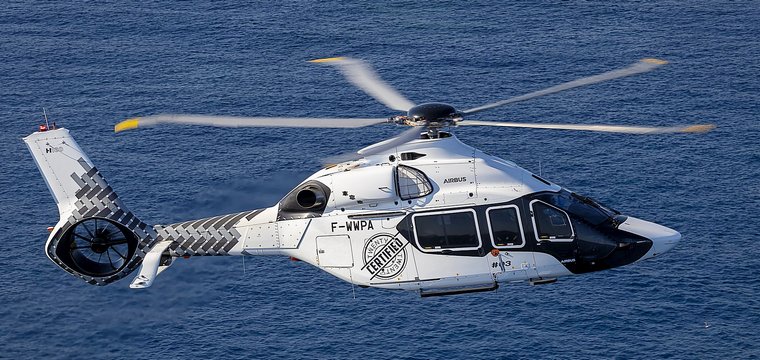 Airbus Helicopters' multi-role twin engine H160 has been granted its type certificate by the European Union Aviation Safety Agency (EASA), marking a new chapter for the programme. The company is expecting FAA certification to follow shortly prior to first delivery to an undisclosed US customer later this year. Photo © Airbus. “The successful completion of the H160 Type Certificate is the result of several years of tremendous work and efforts accomplished jointly by the involved technical teams of the Agency and Airbus Helicopters in a remarkable fruitful cooperation spirit,” EASA Certification Director Rachel Daeschler said. “It is the result of thorough design and testing efforts to ensure the highest safety standards are reached. The design of the H160 makes it suitable for a wide range of versatile missions. It is also one of the most environmentally friendly with respect to fuel consumption and one of the quietest helicopters of its class. My personal appreciation and warmest congratulations are conveyed to the involved technical staff who continuously showed high commitment for constructive collaboration to overcome the challenges inherent to this type certification project,” she added. Airbus Helicopters relied on three prototypes, the first serial aircraft, and two additional test means, the dynamic helicopter zero and the system helicopter zero, to develop and certify the aircraft and continues to mature the aircraft ahead of entry into service. The helicopters have flown over 1500 hours both for flight tests and demo flights so that customers can experience first-hand the innovation and added value the H160 will bring to their missions. Designed as a multi-role helicopter able to perform a wide range of missions such as offshore transportation, emergency medical services, private and business aviation and public services, the H160 integrates Airbus Helicopters' latest technological innovations. These include breakthrough safety features with Helionix's accrued pilot assistance and automated features as well as flight envelop protection. The helicopter also provides passengers with superior comfort thanks to the sound-reducing Blue Edge blades and superb external visibility that benefits both passengers and pilots. H160 was not just designed with passengers and pilots in mind. Operators will appreciate its completeness thanks to its increased fuel efficiency and customer-centric simplified maintenance eco-system: equipment accessibility has been facilitated by the helicopter's optimised architecture. The maintenance plan was thoroughly verified during the Operator Zero campaigns and it is delivered with intuitive 3D maintenance documentation.  NBAA CANCELS 2020 BACE, CITING HEALTH SAFETY 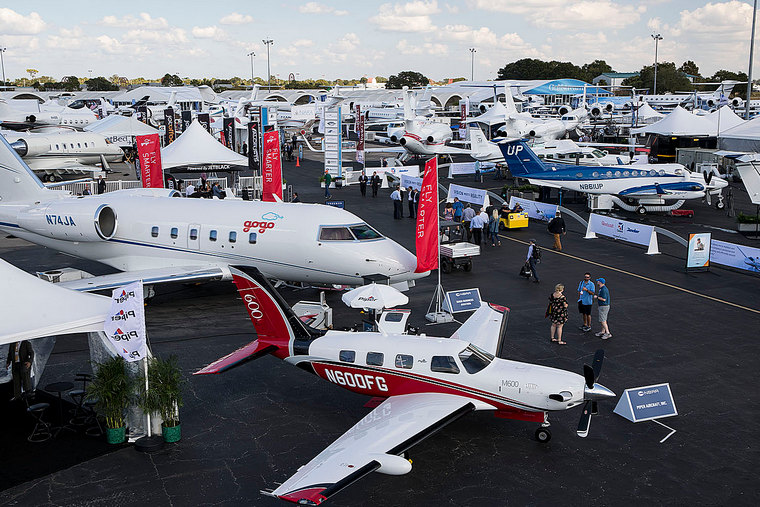 Citing health and safety concerns, NBAA took the extraordinary step on Wednesday to cancel its 2020 Business Aviation Convention & Exhibition (NBAA-BACE) that was to have taken place from October 6 to 8 in Orlando, Florida. NBAA pointed to guidance from public health officials and the challenges of staging an event the scope of its annual meeting during the Covid-19 pandemic. The decision was made as the pandemic is seeming to spike upward in a number of states, including the planned host state of Florida. Photo NBAA. In fact, the Florida Department of Health advises individuals to avoid participation in gatherings of more than 50 people. Given NBAA-BACE typically draws upwards of 30,000 attendees and 1,000 exhibitors, such an advisory would make the event seemingly implausible. On top of this, various and rapidly changing restrictions both within and out of the U.S. make planning for the event extraordinarily difficult and in some cases, impossible. That was reflected in the early exhibitor numbers, which far from finalized, were still at 547, compared with the some 1,000 that the convention typically draws. Textron Aviation already had indicated it did not plan to attend. While the situation could improve as October approached, a decision needed to be made far sooner, to give exhibitors ample opportunity to plan. “It's such a big undertaking you can't wait until September 1 to make a decision. You can't make an 11th-hour decision to pull it,” said business aviation analyst Brian Foley of Brian Foley Associates. The move wasn't surprising, added Rolland Vincent, president of Rolland Vincent Associates and JetNet iQ creator/director, noting that JetNet had polled aircraft owners and operators about potential attendance and “It was very clear that attending was going to be a difficult choice.” The decision is not an easy one for the association, which depends heavily on its events-and in particular NBAA-BACE-to fund its many activities. It also was a highly unusual step as one of the few, if any, times NBAA has had to cancel the event, which was to have been in its 73rd edition. Following the 9/11 terrorist attacks in 2001, NBAA was forced to reschedule the convention in New Orleans. While many associations are no doubt going through the same types of decision-making processes, Foley said the move is particularly disappointing for NBAA, which spent the past several months fighting on behalf of the industry to ensure it can continue operating during the pandemic while having to face its own difficult decisions.  BOEING DREAMLIFTER TRANSPORTS 500,000 PROTECTIVE FACE MASKS FOR UTAH STUDENTS AND TEACHERS 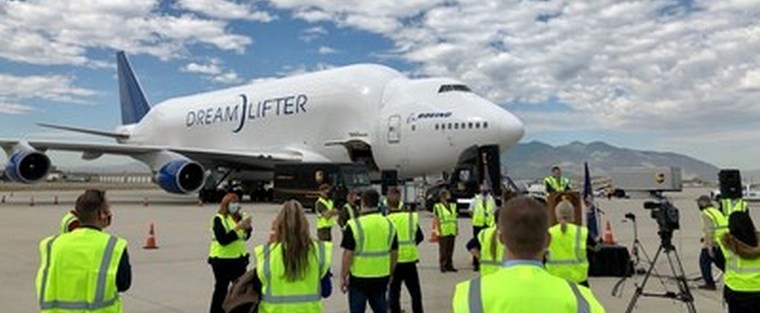 Boeing [NYSE: BA] completed its 12th COVID-19 transport mission, using a Boeing Dreamlifter to bring personal protective equipment (PPE) to the United States. Working in partnership with the state of Utah, Atlas Air Worldwide, H.M. Cole, Cotopaxi, Flexport and UPS, the company transported 500,000 protective face masks bound for students and teachers across Utah returning to classrooms this fall. The state of Utah will distribute the face masks free of charge to school districts across the state with the greatest need. Photo © Boeing. "As students return to school this fall, it will be important that they have masks available," said Utah Gov. Gary R. Herbert. "We thank Boeing and these partners for everything they've done to support our 'A Mask for Every Utahn' initiative and make it possible for our students to have these masks and help keep Utahns safe." "As a Benefit Corporation, we're believers that businesses have a duty to utilize their influence and resources to positively impact the world," said Davis Smith, Cotopaxi Founder & CEO. "We are proud to partner with the state of Utah and Boeing to help our hometown community as we fight this pandemic. Face masks are one of the key tools the public has to slow the spread of the coronavirus and we're thrilled that our efforts can help teachers and students safely get back in the classroom." Similar to previous airlift missions facilitated by Boeing, the Dreamlifter - a converted Boeing 747-400 Large Cargo Freighter - flew the mission with the face masks stored in the lower lobe of the airplane. Following the delivery in Salt Lake City, the Dreamlifter will return to its home base in North Charleston, South Carolina for a 787 components delivery in support of the global aerospace supply chain. "Boeing is proud to continue to use our resources to help stop the spread of COVID-19," said David Calhoun, Boeing President and CEO. "Today's delivery, our 12th COVID-19 response airlift mission, expands our support of essential workers to include teachers and their students across the state of Utah so that they have the protective tools they need to safely and confidently return to their classrooms." To date, Boeing has helped transport more than four million units of PPE - including the in-house production of more than 39,000 3D-printed face shields - to frontline health care professionals and communities in need.  WORLDWIDE INCIDENTS AND ACCIDENTS ZIMBABWE  An Air Zimbabwe Boeing 767-200 carrying 17 crew and 2 passengers on a repatriation flight from Bangkok (Thailand) to Islamabad (Pakistan) to pick up 180 passengers was at FL340 about 150nm northwest of Bangkok about to enter Myanmar's Airspace when the crew received an abnormal indication for the left hand engine and shut it down as a precaution. The aircraft returned to Bangkok. The aircraft was on its flight to Islamabad to pick up another 180 passengers returning to South Africa and Zimbabwe. File photo. South Sudan, Lankien: Incident: The right-hand wing tip of an Eagle Air Let L410 contacted trees during departure from Lankien for a flight to Juba (South Sudan). The aircraft was able to continue to Juba for a safe landing. The aircraft is currently undergoing repairs to its right wing tip in Juba. Netherlands, Eindhoven Airport: A Wizz Air Airbus A320 suffered a bird strike on departure from Eindhoven Airport, the Netherlands. The aircraft on take-off struck one or more birds at 500 feet altitude. The flight crew issued a Pan Pan call and requested a holding pattern to troubleshoot. They reported an unreliable airspeed indication. After consulting with their company, it was decided the aircraft could continue the flight to Skopje, North Macedonia. Turkey, Kayseri Erkilet International Airport: A Corendon Airlines Boeing 737-800 operating the first post-Corona flight from Stuttgart knocked over the spray turret on an ARFF fire truck as it taxied to the apron after landing. The fire truck was positioned to the right of the taxiway and was giving the aircraft a traditional water salute.  THIS WEEK IN HISTORY THE ICONIC CESSNA SKYHAWK CELEBRATES 65 YEARS SINCE FIRST FLIGHT  Textron Aviation Inc., a Textron Inc. (NYSE:TXT) company, is honouring the 65th anniversary of the first flight of the most popular single-engine aircraft in aviation history, Textron Aviation's Cessna Skyhawk. Since the aircraft first took to the sky, more than 45,000 Skyhawks have been delivered to customers around the world-more than any other aircraft in the industry and solidifying the Skyhawk as the aircraft of choice for pilot training. Photo © Textron. Throughout its celebrated history, the Skyhawk has remained innovative and updated with the latest avionic technology. In 2019, the aircraft, along with the Cessna high-wing piston fleet, received an addition of new standard and optional equipment as part of the Garmin G1000 NXi next-generation integrated flight deck, which provides pilots with enhanced control and connectivity in the cockpit.  Today, the Skyhawk remains an integral part of Textron Aviation's pilot outreach efforts with programs like Top Hawk, which enables budding pilots to begin their flying journey. For the past five years, the program has connected student pilots from flight schools and universities across the U.S. with a factory-new Cessna Skyhawk for next-gen flight training. Textron Aviation also donates discovery flights to local community organizations, giving Kansas youth the opportunity to experience the advantages of general aviation first-hand. In 2019, the Textron Aviation Flying Club completed nearly 200 volunteer flights for children and students from the greater Wichita area. This year, Textron Aviation was awarded a contract by the U.S. Civil Air Patrol (CAP) for 17 Cessna piston engine aircraft and among the aircraft were 11 Skyhawk 172s. The CAP holds one of the world's largest fleets of single-engine, piston-powered aircraft--550 in total. More than 500 are Cessna aircraft, used by CAP to save lives, provide disaster relief and emergency services, perform aerial photography reconnaissance and assist with military training.  |
                                  |
 |
 |

Copyright © Pilot's Post PTY Ltd
The information, views and opinions by the authors contributing to Pilot's Post are not necessarily those of the editor or other writers at Pilot's Post.